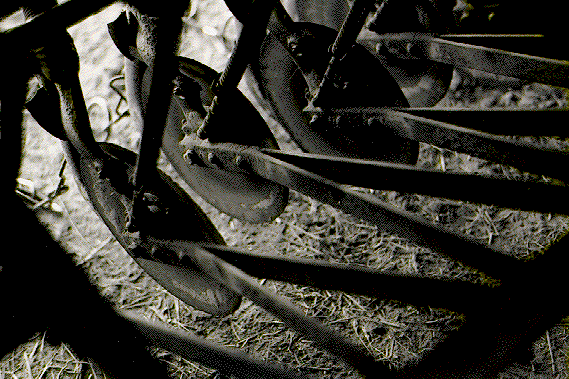

Voices from Knox County:
"No-till has enabled soil to stay where it is supposed to."
"At the time that we were conventionally tilling, we were losing over
nine tons of soil to the acre. After going to no-till, we reduced our soil
loss to less than five tons (which is the recommended tolerance according to the government).
But, we would rather not lose any at all. In some cases we have reduced
the soil loss to less than one ton per acre."
"But when I sat down and read the label on Paraquat, I said,
'There's got to be a better way. This is idiotic!' I went out
and did it anyway, didn't have any other alternative, burned the field
down with chemicals, put the alfalfa in and a beautiful crop. BUT! Let me
tell you the rest of the story. The hay in that field my cattle did not
like."
"If you can't grow it no-till, it can't be grown at all."
"The worm activity in the soil under no-till conditions
(not being disturbed) leaves the soil open and the nutrients are actually moving down through the soil
profile much more rapidly than through conventional tillage."
"I think in future years there will be a form of farming that will develop
that will be better than no-till. But, at the present time it is the best
thing that we've got going. It's environmentally safe [and]
it's highly productive."
As you can see, Knox County farmers have differing opinions about no-till
farming. No-till, a widely accepted soil-conservation method used in the
majority of Knox County's corn and soybean fields, is a farming method
that uses chemicals instead of plowing and discing in order to maintain soil
fertility.
Reduced-till is a hybrid
of no-till and conventional plowing methods.
Both no-till and reduced-till
require a substantial amount of chemical fertilizers and pesticides. It has
not been proven that chemical use in Knox County has been detrimental
to human health or water
quality. Although, concerns about chemicals have led a minority of
consumers to purchase chemical-free, organically grown foods.
Click to see our summarizing chart of different farming styles.
photo credit: Stephanie Martin


 E-Mail The Family Farm Project
E-Mail The Family Farm Project